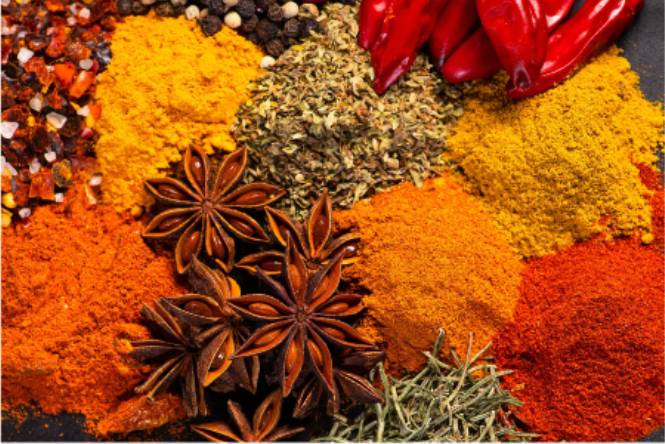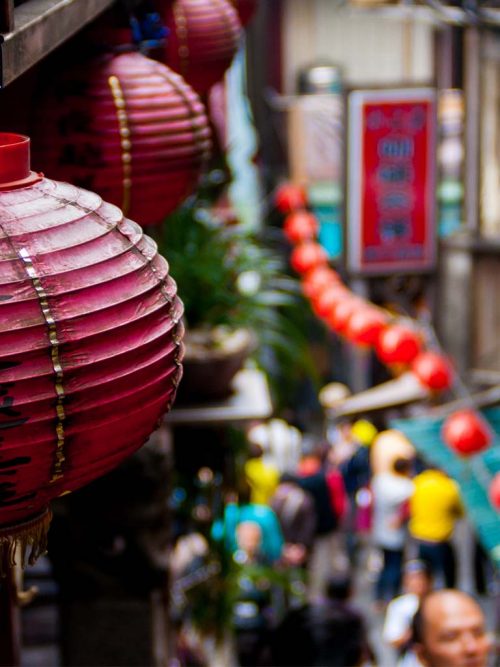Use These 8 Herbs And Spices To Up The Ante In The Kitchen
02 August 2022
One of the best things about a serviced apartment is having a fully-equipped kitchen – it makes it so easy to enjoy snacks or meals in the comfort of your abode. Whether it’s a take-out or something you’ve whipped up, you can spice things up by adding some exotic spicy herbs or spices from a nearby supermarket, convenience store or retailer like Anthony the Spice Maker in Singapore.
Here are eight herbs and spices, and the various ways you can use them.
Turmeric

Out of all the herbs and spices out there, turmeric has gained traction in the wellness scene as a healthy ingredient and one of the top trending flavours. Curcumin, which gives turmeric its hue, is packed with anti-inflammatory properties. Pungent, bitter and warm, its culinary use spans far and wide. It is used in recipes across South Asia to Morocco and South Africa. It is also a mainstay in Southeast Asian and Indian cooking.
How chefs are using this spice: At Indian restaurant Gaggan Anand in Bangkok, chef and founder Gaggan Anand stays true to his mantra of “progressive Indian cuisine”, giving a twist to classic turmeric-infused dishes served omakase-style.
How you can use this spice at home: Add a tablespoon or two into curries, sprinkle some into salads or blend it into a smoothie or latte.
Sriracha

If you like spicy food, you’ll love Sriracha. While not an herb or spice in itself, Sriracha is a blend of chilli peppers, garlic, vinegar, sugar and salt, and is considered to have a mild zing scoring 1,000 to 2,500 units on the Scoville scale, which is approachable for most. This hot sauce is said to have originated in the Thai port town of Si Racha. Andrew Zimmern of Bizarre Foods called it one of the top food trends back in 2013, and it has only grown in popularity since.
How chefs are using this spice: British celebrity chef Jamie Oliver has used it to add a spicy spin to mellow fare like sushi bowls.
How you can use this spice at home: Amplify the taste of noodles, tacos, pho and even sushi with as much Sriracha as you prefer.
Harissa
While Southeast Asia and America swear by its sriracha sauce, North Africa and the Middle East have harissa paste. A basic blend is made up of herbs and spices such as dried serrano chillies, garlic, fresh coriander, caraway seeds, salt and olive oil for a different flavour and heat. Its taste is complex yet versatile enough for use in spicy food as a meat rub, a base for stews and sauce, or dressing for salads.
How chefs are using this spice: Artichoke, a restaurant in Singapore, uses harissa in a Smashed Eggplant dish, where it’s complemented with tahini, coriander and pine nuts. Harissa is also a main part of the Green Harissa Seabream with blackened onions and split cream.
How to use this spice at home: Fire up a salad, stew, seafood, or just plain bread with some garlicky harissa paste
Lemongrass

This delicious, tropical plant is native to South Asia, Southeast Asia and Australia, but is a relatively easy herb to grow indoors just by using a cutting from an existing stalk. It is common in Thai cuisine, in dishes like tom yum goong and pad thai. Lemongrass has a citrusy, herbal flavour with some heat but low on acidity. This spicy herb is also said to be beneficial for health; enjoy it as a tea to aid digestion or diffuse lemongrass oil to relieve stress and anxiety.
How chefs are using this spice: Executive Chef Ciaran Armstrong of The Halia in Singapore, often uses this herb in his menu. You’ll find it in the freshly bottled Lemongrass and Ginger drink, in the refreshing Wicket Cricket cocktail and even in dishes like the Lemongrass and Ginger Prawn Salad with mango and tomato, glass noodles and ginger flowers.
How to use this spice at home: Boil with pandan leaves and add sugar for a refreshing hot or cold drink, or slather meats with blended lemongrass as part of your marinade before tossing it on the grill or oven. You can also add finely chopped lemongrass into a bowl of noodles.
Ghost Pepper
A bold ethnic flavour from India, ghost pepper is also known as bhut jolokia. But be warned: this eye-watering spicy herb ranks high on the Scoville scale at more than a million units – that’s about 400 times hotter than Tabasco sauce! While it is known to elicit a deceptively sweet flavour at first taste, the spiciness kicks in barely a minute later. The heat then intensifies for 10 to 15 minutes more before slowly fading half an hour later.
How chefs are using this spice: Roast duck restaurant in Singapore, London Fat Duck, has claimed their Ghost Pepper Fish Skin as the spiciest fish skin snack in the world. They can be purchased online for $5.80 per pack. Another spicy snack is Mamee’s ghost pepper instant noodles. Not for the faint-hearted, the noodles come in an ominous dark grey colour and an equally dark chilli sauce. Needless to say, have it in small amounts and plenty of water nearby!
How to use this spice at home: Add it to curries, noodles or a chicken stir-fry for added heat.
Jalapeno

Jalapeño is famous for being used heavily in Mexican cuisine. Fried, grilled, baked, pickled, blended – the possibilities are endless with these juicy chillies. With a heat rating that sits comfortably between capsicum and serrano chilli, it is typically served fresh and green. However, when left on the plant longer, it turns red and develops a slight sweetness and its heat quotient rises. Whatever its colour, it is what makes spicy food special.
How chefs are using this spice: At Café Iguana in Singapore, jalapeño makes an appearance in the El Marisco Ceviche, as well as within the assorted empanadas.
How to use this spice at home: Spice up your nachos or taco takeaway with pickled jalapeños, burgers, salsas, all stuffed with cheese and baked.
Chipotle
There’s jalapeño and there’s chipotle, and they’re one and the same. Well, almost. Chipotle is jalapeño that’s been dried and then smoked with woods like hickory, oak and pecan. Only large jalapeños are chosen for this process to ensure the chipotles remain fleshy.
How chefs are using this spice: Chipotle is a mainstay at Singapore’s Super Loco, and you’ll find it in most dishes on its own or blended into a delish mayo sauce.
How to use this spice at home: Amp up your ketchup dips, salsa or roast veggie seasoning with a generous dollop.
Cardamom

An ancient spice, cardamom is also very expensive. This herb is native to southern India but also grown in Sri Lanka,Guatemala and Tanzania. Cardamom is a light stimulant and also a digestive. While aromatic and warm, it can taste unpleasant when left to cook for too long.
How chefs are using this spice: Its use is heavily concentrated in Asian cooking like traditional Indian dishes. But at cocktail bar Native in Singapore, founder Vijay Mudaliar takes inspiration from the flavours he grew up with and experiments with them in cocktails. The Pineapple Arrack, made with a base of Ceylon Arrack, is laced with green cardamom for a touch of its perfumed flavour.
How to use this spice at home: Cardamom works best in curries, masala tea and even briyani – just be sure to fish it out before consumption, as it leaves a rather nasty aftertaste when bitten into.
Adapted from Fraser Cachet Issue #28 © Frasers Hospitality and SPH Magazines. Updated August 2022.

Not a Fraser World Member? Sign up today for free membership and enter a world of privileges
- Complimentary Stays
- Up to 20% off Best Flexible Rate
- Room Upgrade
- Early Check-in
- Exclusive Rewards
- Welcome Voucher


























